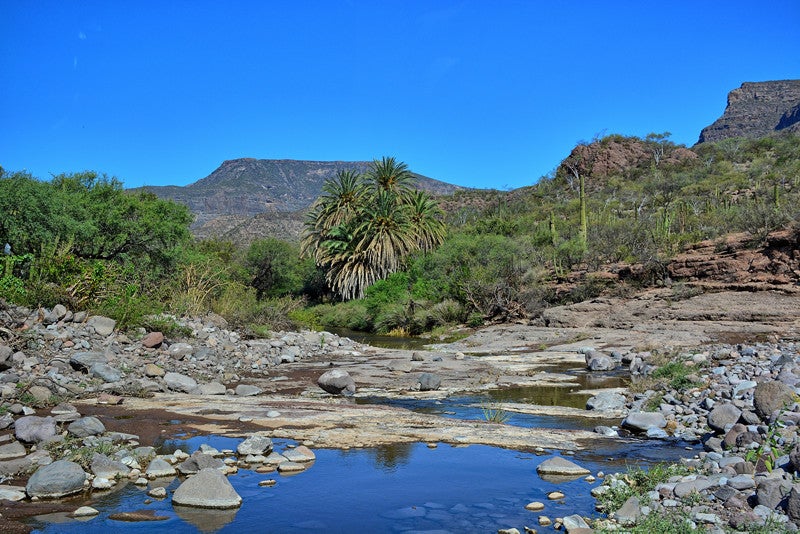Survival: Find Water in the Desert

'Oasis in Mexico. (Photo by Kirt Edblom/Flickr)'
Eight years ago, a friend and I were hiking Jump Up Canyon in Kanab Creek Wilderness on the Grand Canyon’s North Rim, with big plans to hike across the Esplanade and around Fishtail Point to Thunder River (40 miles, one way). The Esplanade is a long slickrock bench about 2,000 feet below the rim. It’s great for views, but lacks reliable springs. It was May, though, and we figured the potholes scattered across the Esplanade would contain water from snowmelt and recent rain. Because of this, we thought we could easily find water in a desert.
Five miles into the Esplanade traverse, we found about three liters in a few shallow potholes and set up a dry camp. By midafternoon the next day, in temperatures that climbed into the 90s, we’d gotten dangerously low on water. Then we came across a series of large, shallow pools, each about four inches deep and the diameter of a VW Beetle. After setting up camp, we drank a few liters, boiled water for pasta, and rejoiced that our instincts had been rewarded. We felt rich with water.
That’s when we made a crucial error. Before going to sleep, we failed to refill our bottles. When we awoke the next morning, all the water was gone. Overnight, it had evaporated completely, leaving only mud. We decided to turn around and backtrack 15 miles on exposed slickrock that we knew contained no water. We each had about half a liter. It was a hot, hard, and agonizing day, because we knew there was no margin for error. Now, in the desert, I never pass up a chance for a refill.
Dangerously thirsty in the desert? Follow these tips to find water.
1. Dig in a dry riverbed. Outer bends and depressions are best, since they’re the last places water would have evaporated.
2. Search for potholes (tinajas) in shady areas, especially at the bottoms of cliffs and ravines. With binoculars, look for distant shiny spots and bright green foliage.
3. Look for honeybees and songbirds, which are good indicators of water.
4. Keep an eye out for trees on the horizon. Willows, sycamores, and cottonwoods can indicate that water is near the surface. Dig near the base of a tree trunk to find water.